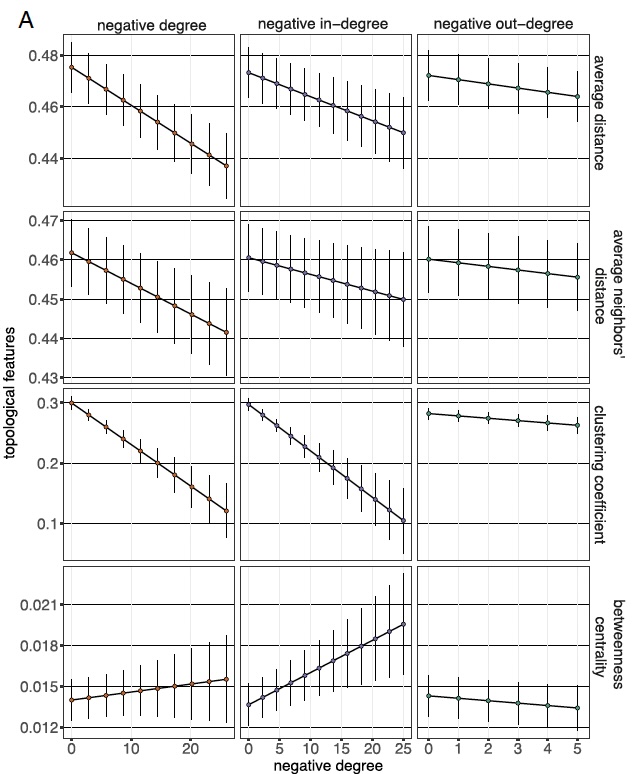
The Structure and Function of Antagonistic Ties in Social Networks
Abstract
Negative or antagonistic relationships are common in human social networks, but they are less often studied than positive or friendly relationships. The existence of a capacity to have and to track antagonistic ties raises the possibility that they may serve a useful function in human groups. Here, we analyze empirical data gathered from 24,770 and 22,513 individuals in 176 rural villages in Honduras in two survey waves 2.5 y apart in order to evaluate the possible relevance of antagonistic relationships for broader network phenomena. We find that the small-world effect is more significant in a positive world with negative ties compared to an otherwise similar hypothetical positive world without them. Additionally, we observe that nodes with more negative ties tend to be located near network bridges, with lower clustering coefficients, higher betweenness centralities, and shorter average distances to other nodes in the network. Positive connections tend to have a more localized distribution, while negative connections are more globally dispersed within the networks. Analysis of the possible impact of such negative ties on dynamic processes reveals that, remarkably, negative connections can facilitate the dissemination of information (including novel information experimentally introduced into these villages) to the same degree as positive connections, and that they can also play a role in mitigating idea polarization within village networks. Antagonistic ties hold considerable importance in shaping the structure and function of social networks.
Citation:
Ghasemian A, Christakis NA. The structure and function of antagonistic ties in village social networks. Proceedings of the National Academy of Science of the United States of America (PNAS). 2024 Jun 25;121(26):e2401257121. doi: 10.1073/pnas.2401257121. Epub 2024 Jun 18. PMID: 38889155; PMCID: PMC11214085.